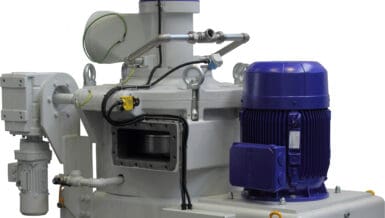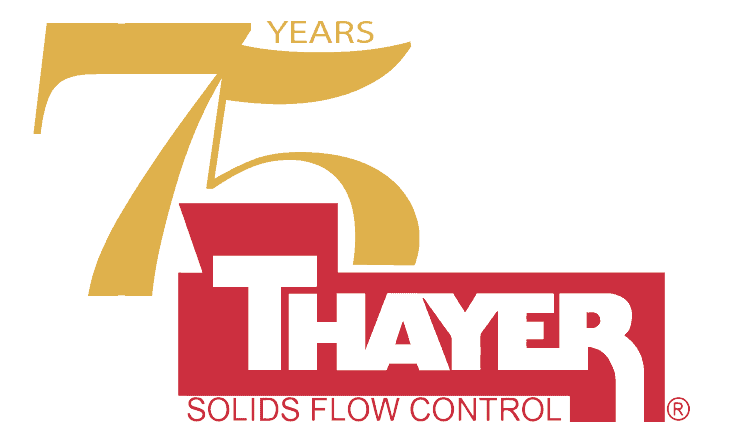Therefore, a producer of high-quality urea decided to set up his third urea plant with the world’s latest urea granulation design. For such a long-term investment he aimed for the highest possible efficiency paired with reduced energy consumption.
At the heart of the new plant, RHEWUM screening technology ensures the desired level regarding the efficiency of the process and the purity of the urea product. The producer selected RHEWUM for design, manufacturing, and commissioning of the extractor lines and main screens with the proven direct excitation technology for the production of granulated urea.
As the pioneer in directly excited screening technology RHEWUM has been successfully developing, designing, and manufacturing screening machines for international companies since the 1950s. Designing energy-efficient main screens for new and existing urea granulation plants has been the RHEWUM standard for many decades.
The Task
In the urea granulation, the combination of vibrating extractors with linear motion screens guarantees the level of the fluidized granules in the granulator and additionally protects the process by screening out the lumps. Downstream in the granulation unit, the main screens ensure the quality of the final product. In this task, RHEWUM extractor lines, diverters, special chutes, distributing feeders, safety, and process screens secure a consistent process.
The feed capacity of the main screens is 4 x 65 t/h. The given screening task is to separate the lumps (>15 mm) in a separate outlet and the coarse particles (4 to10 mm) in the second outlet while the product (2 to 4 mm) and the fines (< 2 mm) flow into separate inlets of the product diverter. The steady product requirement of 95 % purity with minimum product loss in the coarse and fine fraction is essential for high performance screening.
Efficient Screening – Step 1: Distribution
To make use of the complete screening area requires a constant and uniform distribution of the area directly at the inlet of the screening machine. The distribution feeders are pre-positioned to the screens and guarantee the continuous quality of the product in the following steps.
The moving inner distribution plate which is vibrated by two outer out-of-balance motors and a static housing allows a firm and dust-tight flange connection without flexible sealing. The static housing further permits inspection of the distribution feeder and adjustment with guiding plates during operation. The low weight of the vibrating inner distribution plate reduces the energy consumption to 0,68 kW per Motor and the dynamic loads to a maximum of 0,25 kN in vertical and 0,125 kN in horizontal direction per support point.

Efficient Screening – Step 2: Screen Cloth
The most important contact part of the screening machine with the urea is the screen cloth. Choosing the right mesh opening will create a high quality product. Plus, a constantly open screening area will increase the plant capacity and reduce the costly recirculation of material. Easy and fast maintenance of the screen cloths will lead to high availability. All these points have been incorporated into the design of the main screen cloths.
The mesh openings were optimized during test trials in the RHEWUM pilot plant in Remscheid. Directly excited screen cloths with an automatic cleaning cycle keep the screen cloths free from clogging. Every screen cloth can be changed individually without removing any of the others, which is very useful considering that different wear of the screen cloths can lead to individual maintenance intervals. The screen cloths are tensioned by tensioning ledges with only four clamping nuts. Between the tensioning ledges and clamping nuts Belleville spring packages are installed to make the screen mesh more flexible and self-tension itself in case of wear or high temperature. A protection sleeve keeps the dust away from each screw and ensures easy replacing. In total there are only four screen cloths installed and each can be replaced within just 10 minutes.

Efficient Screening – Step 3: Screening Technology
Requirements for urea granules are quite challenging: continuous and economic production of well-defined products in reproducible qualities. By choosing advanced technology the objective to efficiently operate the plant with lowest operation cost can reliably be achieved.
Directly excited screening machines of type WAU employ the vibration effectively into the screen mesh, thus directly into the urea granules. The required energy consumption is only 0,036 kW/ton of screened urea. The availability of each component in the urea granulation process needs to be as high as possible. One weak point in the process will create a bottleneck and in the worst-case shutdown of the whole granulation plant. For guaranteeing 100 % availability, the screening machine is equipped with 15 small out of-balance-motors which keep the performance stable till the next scheduled maintenance period in case of one motor failure. The motors are flange connected to the vibrating axes which transmit the vibrations through knocker shaft profiles and screen cloths to the urea. The RHEWUM WAU’s high number of motors causes an increased performance and also enables to give the screen decks different amplitudes. As a result, the amplitude remains uniform over the complete width of the screen, which leads to a consistent screening quality at the entire screen area.

As the housing has only a static function, no dynamic loads are created and transmitted to the building. Due to the low vibrations, the directly excited screens save the need for heavy steel structure even when located at the top of the building. Connections to on- and off-going chute work are designed dust-tight without flexible sealing to minimize the downtimes for maintenance. Reducing energy consumption, increasing availability, saving steel structure, and avoiding unnecessary maintenance have been successfully incorporated into the urea screening plant for increasing the efficiency of the whole urea granulation plant.
Efficient Screening – Step 4: Quality Control
To optimize the urea plant design it is reasonable to carry out screening trials despite all new developments in this field. Test trials offer the possibility to compare laboratory results with the respective product data. These results have a significant role in the design process of the respective machine guaranteeing later success in the production.
In order to check if the guaranteed product qualities can be reached, trials were conducted in the RHEWUM laboratory. Based on former experience, the trials were made using a WAU screen type. Furthermore, the screen products were analyzed on a laboratory screen tower and the optical measurement system “SizeChecker”. The results of both measurements are presented in the following.

The diagram shows that all measurements of the SizeChecker are matching with the corresponding analyses performed on a laboratory screen tower. For the screening analysis and the SizeChecker analyses, exactly the same samples were used.
The SizeChecker is a compact particle size measurement device allowing simultaneous measurement of particle sizes and particle shapes continuously. By means of digital image processing pourable particles of 0.2 – 20 mm can be optically measured. Since all particles of the product sample are completely scanned, the RHEWUM SizeChecker offers a cost-effective alternative to the common analysis screens. The SizeChecker can be used in the production with an automatic sampler device to avoid time-consuming sample taking and manual analyzes. The measured results are automatically recorded and alarms can be set in case of variation in the particle size distribution.
The sample is conveyed via a hopper and a distribution feeder along with the light source to the material outlet. During this time the contact-free measuring is carried out. The digital pictures produced by the camera are free from distortion and are electronically processed.
The SizeChecker can be integrated into a process for production monitoring and quality control.
Outlook
After the convincing performance at the RHEWUM test facilities, the screening machine type WAU will prove its high-grade applicability for screening urea at the Persian Gulf for the next decades. The tests conducted by RHEWUM in Remscheid determined that customer demands on purity and yield have been reached and exceeded at the site. The next reasonable step for the producer will be to set up the fourth urea granulation plant in the future.
Conclusion
Together with its customer RHEWUM designed, supplied, and commissioned a highly efficient screen for urea at high capacities. Aspects like availability, energy consumption, saving natural resources, and optimizing the maintenance schedules are adopted successfully into operation.
The positive experiences with previously supplied machines type WAU to several fertilizezr plants worldwide were continued in the latest design urea granulation plant.















































